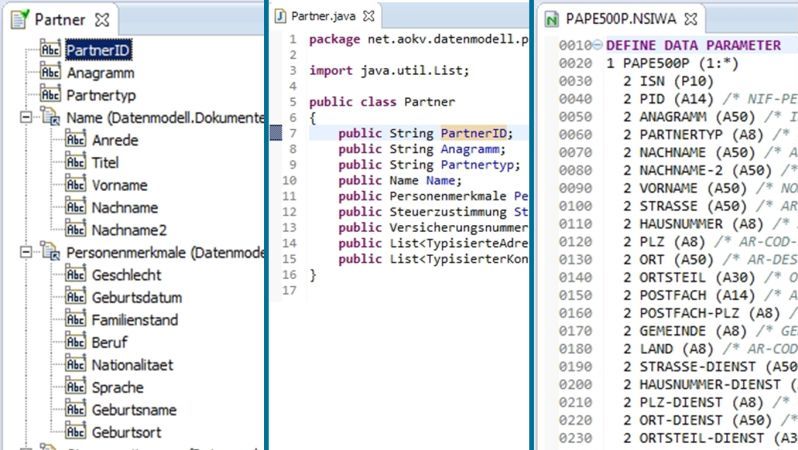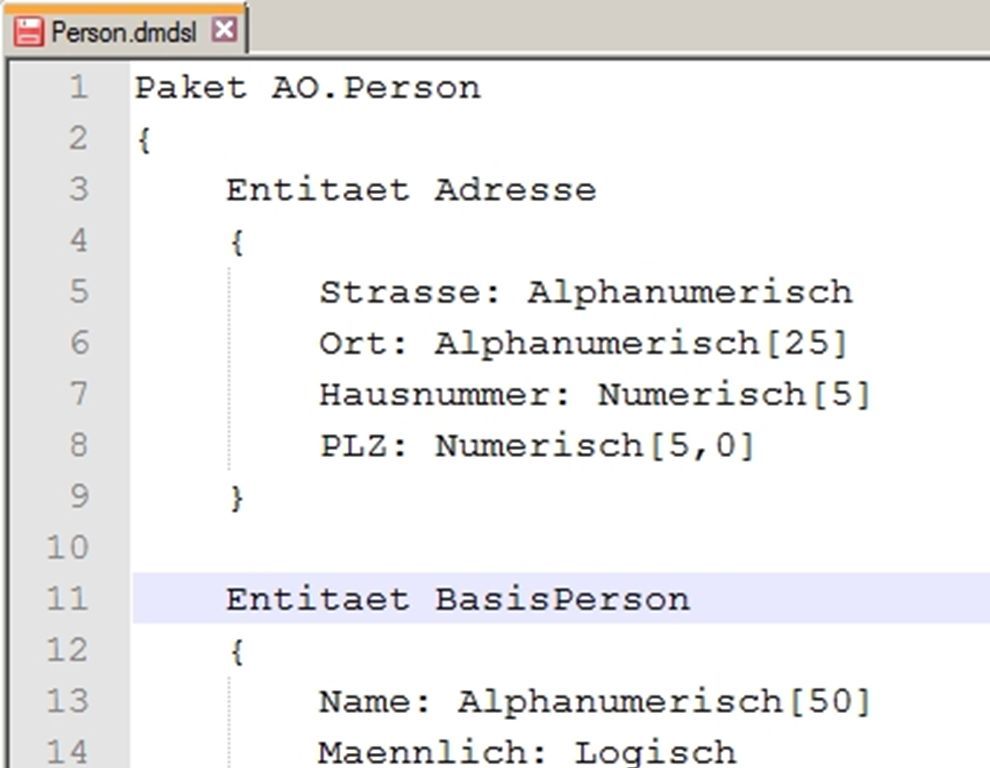One of the two main lessons I learned while SOA-fying our monolithic application was:
Avoid redundancy.

We started out implementing the data structures for our services by hand. This means, I had to create the same data structure over and over again in different systems. For example, a simple Webservice for reading a person from our system led to at least three different implementations of the same data:
- An Integration Server document
- A Java class
- A Natural Parameter Data Area
You can see an example of these three data definitions below.

Perhaps you can imagine how much fun I had when a parameter needed to be added or changed. Especially in Integration Server changing an interface literally hurts due to the hundreds of lines – the simple person example above already contains about 70 attributes – I had to draw. Often I even had to draw these lines multiple times due to transformers that needed to be added between the mappings (e.g. Natural does not have the concept of null, so I had to transform empty String fields to null).
DSL to the rescue!
What we ended up doing was to implement a Domain Specific Language for defining our data model. You can see an example for a person below.

Based on this single source of truth now all the other representations of the data model get generated automatically. For example, there’s a code generator for Natural PDAs, Java classes, IS documents, XML files for our output management system etc. If a system gets added to our infrastructure and needs to represent the data in a special way, we simply need to add another code generator to the list.
By the way, we use Xtext and Xtend for all our DSLs. If you’re interested in the topic and understand German, you can take a look at the project documentation of my former apprentice here: Projektdokumentation von Markus Amshove (mit 100% bewertet).
To sum up: If you do the same thing over and over again, lean back and think about it for a minute. Do you really need to model the same data in different systems? Or could there be a way to automate the process or even generate the needed artifacts? If there is, follow the DRY principle and implement it.